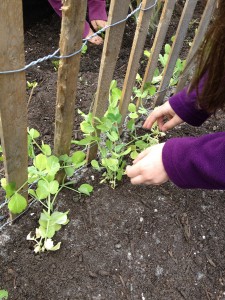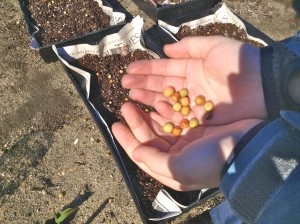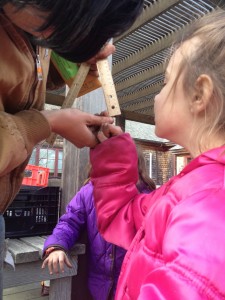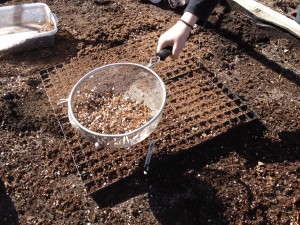The “Sustainability,” “Whole Foods,” “Locavore,” “Buy local…organic,” etc. is a relatively new exciting buzz in our food world. When I read Barbara Kingsolver’s Animal, Vegetable, Miracle, I became a convert. The Kingsolver family took a 12 month challenge to eat ONLY foods grown within a 50 mile radius of their small family farm in Virginia. That meant growing their own food like crazy and buying everything else at local farmer’s markets.
 This sounds, and indeed in today’s world, is astounding! While each family member was allowed a few select food items that were impossible to grow near by (coffee beans, olive oil…) the thought of consuming food that doesn’t come from CA or Peru seems impossible. And practically is. Yet two generations ago, many communities only ate what was produced nearby.
This sounds, and indeed in today’s world, is astounding! While each family member was allowed a few select food items that were impossible to grow near by (coffee beans, olive oil…) the thought of consuming food that doesn’t come from CA or Peru seems impossible. And practically is. Yet two generations ago, many communities only ate what was produced nearby.
The amazement is that we have moved in only two generations from a land that took for granted a local food basket culture to consuming foods primarily if not exclusively grown half way around the world! In half a century we have forgotten how food is created and where it comes from.
 And in that time we have lost the traditional methods of farming that sustained communities for centuries. The family heirloom seeds and best practices to grow in a specific climate were lost. Our new “farming warriors” have delved into these methods and have brought them back, integrated with new agricultural science knowledge. The Children’s Garden and Farm to School programs are lucky to have two expert farmers that bring the new and old to our gardening experience.
And in that time we have lost the traditional methods of farming that sustained communities for centuries. The family heirloom seeds and best practices to grow in a specific climate were lost. Our new “farming warriors” have delved into these methods and have brought them back, integrated with new agricultural science knowledge. The Children’s Garden and Farm to School programs are lucky to have two expert farmers that bring the new and old to our gardening experience.
At the Children’s Garden, many children struggle to identify the vegetable that french fries come from when they first arrive. By the end of their summer experience they can differentiate potato from beet and carrots just by looking at the plants’ leaves, growing above the ground.
Today I will share some of the secrets the child gardeners have learned from our expert farmers.
Placement of Seeds:
 Farmer Stephanie has stressed the importance of having room for the plants to grow. Measuring how far apart to place seeds and how deep is critical to the survival of a seed. Farmer Drake taught the children how to use their finger tips to measure space between pea seeds and how deep to push the dirt down to form the seed’s hole.
Farmer Stephanie has stressed the importance of having room for the plants to grow. Measuring how far apart to place seeds and how deep is critical to the survival of a seed. Farmer Drake taught the children how to use their finger tips to measure space between pea seeds and how deep to push the dirt down to form the seed’s hole.
Planting becomes a math lesson: Measuring the finger teaches about inches and simple fractions (many seeds only need 1/2 and 1/4 inch deep holes). The older children can measure the row and calculate how many seeds/plants will fit into the row.
Planting Seedlings:
If a picture is worth a thousand words, a video is even better:
Benefits:
- Several gardening posts have described the fine motor and sensory motor benefits of planting.
- Autonomy for a child is huge in terms of self worth and confidence. Note the confidence with which our second grader proceeded with planting that tender seedling.
- Math and science concepts are reinforced.
This post reflects the partnership and creative collaboration between The Motor Story, Sustainable CAPE , Truro Public Library and Truro Recreation.
